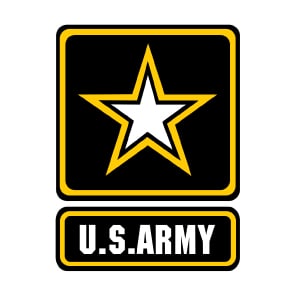 Locations for Training:
Locations for Training:
Please note that the recent (June 2018) addition of 17 success criteria found in WCAG 2.1 are briefly covered in this course. However, like AAA-level criterion, 2.1 updates currently are not included in legislation, and so receive less focus.
Prerequisites: Students should have taken the Introduction to Web Accessibility, WCAG 2.0, and Section 508 Compliance course or have an equivalent understanding of WCAG 2.0 A and AA requirements. Knowledge of HTML and CSS is essential. Familiarity with JavaScript is helpful, but not necessary. Students must have a good working knowledge of computers, operating systems, using a mouse, keyboard, standard menus and commands. Students must be able to open, save, and close applications and files, as well as navigate to other folders.
Job Roles That Use Web Accessibility:
Managers
Project teams
Web developers
Accessibility testers
Anyone who needs to learn about web accessibility, including the recent changes in Section 508 accessibility legislation, and how to make a website compliant
Anyone who need to create accessibility conformance claims, such as VPAT, and who need to create a strategy to maintain compliance
Projects That Use Web Accessibility:
Creating, assessing, remediating accessible Web pages
Planning and conducting accessibility review
Web Accessibility for Web Pages and Applications with WAI-ARIA, WCAG 2.0, and Section 508 Compliance Advanced Course Outline
[one_half]1. Creating Semantic Markup and Structure with HTML5 and WAI-ARIA
This topic examines methods to use HTML5 and ARIA to create semantic markup and page structure.
2. Accessible Links, Forms, and Labelling
In this topic, students learn advanced labelling techniques using ARIA to enhance hyperlinks, instructions on web pages and forms, and other labelling issues.
3. Advanced Table Accessibility
In this topic, students learn HTML and ARIA techniques to address accessibility issues in complex tables, as well as in tables used for organizing forms, and how to make assistive technology ignore layout tables.
4. Advanced Form Accessibility
This topic addresses increasing accessibility in forms by ensuring that labels are programmatically associated with inputs and that like fields are grouped together. It also covers providing to the user in an accessible way any instructions and other information, such as required fields or expected data entry format.
5. Using WAI-ARIA for Accessibility in Widgets and Web Applications
Students take a deeper dive into using ARIA to improve accessibility by exploring best practices for using ARIA, as well as what to avoid doing. Using online resources, students explore accessible widget design patterns including using ARIA roles, states, and properties, and conventions for functionality and keyboard operability.
[/one_half][one_half_last]6. Controlling Focus and Functionality in Dialogs
This topic explores various approaches to the user experience and functionality in dialogs (“pop-up windows”), including controlling focus, keyboard interface expectations, and how to use ARIA to ensure vital information is passed to assistive technologies such as screen readers.
7. Using ARIA to Provide Feedback to Users
ARIA live regions and states are explored in a variety of circumstances to examine how ARIA can be programmatically changed with JavaScript in order to provide updates to assistive technologies about dynamic changes after the initial page load, for example, providing form validation errors or updating content. By studying working examples of ARIA used on dynamic web pages, students observe ARIA code updating in real time.
Labs
To reinforce and practice skills learned in the course, students use online tools to find the best ARIA solutions to remedy accessibility issues, perform written exercises in which they fix accessibility issues in HTML code, and add appropriate ARIA to HTML code for widgets.
[/one_half_last]
Disclaimer: All course objectives and outlines are used as a guideline and are subject to change to ensure the latest information is covered to support real world use of the technology.
Software Versions: ThinkB!G open enrollment classes are taught on the most current version of software whenever possible. To request a specific version, please Contact Us or call us at 301-362-2250.










